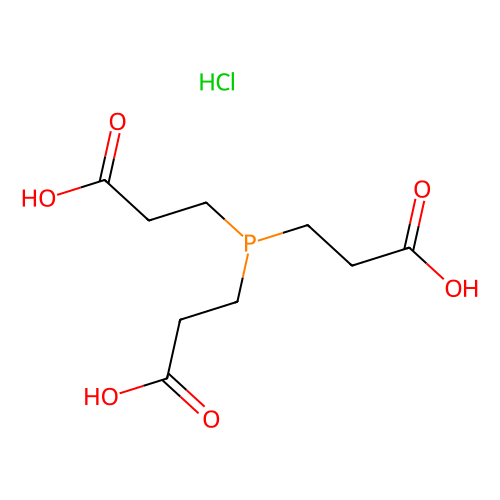General description
It belongs to the trialkylphosphine class.
Tris (2-carboxyethyl) phosphine (TCEP) is very effective in cleaving disulfide bonds in aqueous solution. It dissolves in water and is odorless, unlike other trialkylphosphines (tributylphosphine). It is also less toxic than 2-mercaptoethanol. These advantages make it better than the other reducing agents.
Application
Tris (2-carboxyethyl) phosphine (TCEP) can be used in several downstream applications including SDS-PAGE, mass spectrometry, labeling with cysteine specific tags, and modification of cysteine containing compounds. It prevents oxidation of protein samples, which makes it a useful buffer component as it helps to preserve enzymatic activity. It has been used in the reduction and measurement of glutathione.
Tris (2-carboxyethyl) phosphine (TCEP) has also been used:
- to cleave cysteine residues in a synthetic peptide
- in reduction buffer for RNA
- for the reduction of oligonucleotides
- as reducing agent during mitochondrial isolation
Biochem/physiol Actions
As a non-mercaptan reducing agent, it avoids the toxicity inherent in thiol-containing compounds. It is capable of disrupting the botulinum neurotoxin B heavy-chain/light-chain complex that is held together by a single disulfide bond, and that is responsible for endocytosis, and ultimately the toxicity, of the toxin. Since disulfide-coupled subunits are characteristic of many toxins (e.g., ricin, snake venom, and all BoNT serotypes), it may be useful as a rescue prophylactic in cases of toxin administration.
Tris(2-carboxyethyl)phosphine hydrochloride solution reduces the disulfide bonds and leaves other functional groups intact in proteins.
Shipping Information:
Hazmat Fee: $65.00 + applicable shipping charges are added after the order is placed.
More Information: https://cenmed.com/shipping-returns
- UPC:
- 51111869
- Condition:
- New
- Availability:
- 3-5 Days
- Weight:
- 1.00 Ounces
- HazmatClass:
- Yes
- MPN:
- 646547-10X1ML
- CAS:
- 51805-45-9












